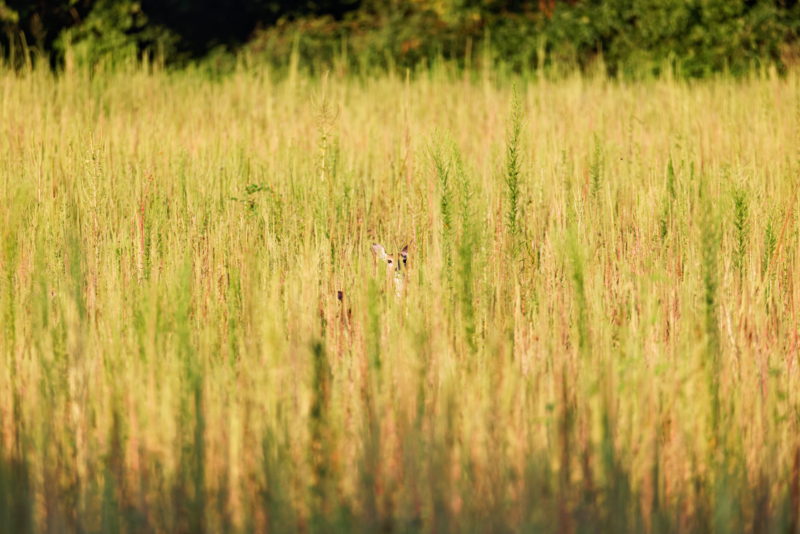Have you spotted the White-tailed Doe in the photo I took a few days ago at the Sequoyah National Wildlife Refuge in Oklahoma? She’s tucked away in a field, camouflaged against the plants that grow abundantly this summer. I’m not entirely sure what these plants are, but the deer seem to appreciate the cover they provide. This field, typically planted with soybeans or corn, looks different this year—no crops, just wild, natural growth.

You might be wondering why this change happened. It turns out, the Sequoyah National Wildlife Refuge has a well-thought-out plan for how it manages the land, and sometimes, that means letting fields return to their natural state.
The Cooperative Farming Program
The Sequoyah National Wildlife Refuge uses a cooperative farming program as part of its broader land management strategy. This program allows farming on specific plots within the refuge, but not every field is meant for crops. The absence of soybeans and corn in this particular area isn’t just a fluke; it’s a conscious decision tied to the refuge’s goals.
Why Some Areas Aren’t Farmed
So, why aren’t crops planted in certain parts of the refuge? The reasons are all about maintaining a balanced and thriving ecosystem.
1. Habitat Diversity:
The refuge’s primary mission is to create and preserve a diverse environment that supports a wide variety of wildlife. While some fields are cultivated, others are left in their natural state to serve as vital habitats for native species like our White-tailed Doe. These natural areas offer shelter, food, and breeding grounds for wildlife.
2. Conservation Priorities:
Wildlife conservation is at the heart of every decision made at the refuge. Sometimes, this means prioritizing the needs of specific species over farming. For instance, wetlands and water bodies within the refuge are crucial for waterfowl and aquatic species, and these areas are kept wild, not farmed.
Resource Management and the Bigger Picture
The decision to reduce farming in certain areas aligns with the refuge’s long-term conservation goals. Over time, the refuge has intentionally decreased the acreage devoted to farming to better serve wildlife. However, farming is still a part of the management strategy, but it’s done selectively, on about 2,330 acres of the refuge.
By carefully selecting which areas to farm and which to let return to their natural state, the Sequoyah National Wildlife Refuge can support both agricultural benefits and its primary mission of wildlife conservation.
So, next time you visit and see fields like the one in my photo, remember that there’s a bigger plan at play—one that helps ensure that places like Sequoyah remain a haven for wildlife, including our White-tailed Doe.
For more details on how the refuge balances its land use, check out their official site: Sequoyah National Wildlife Refuge.

It is good to know that there are still places where Nature is more important than the politics of profit.
It would be good if this example was followed by all those who manage the various existing natural parks.